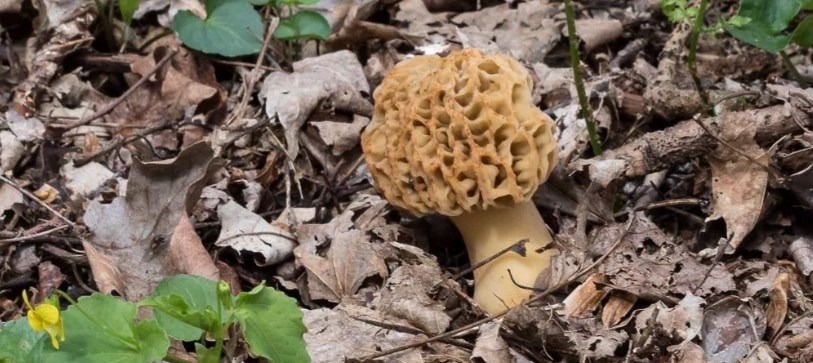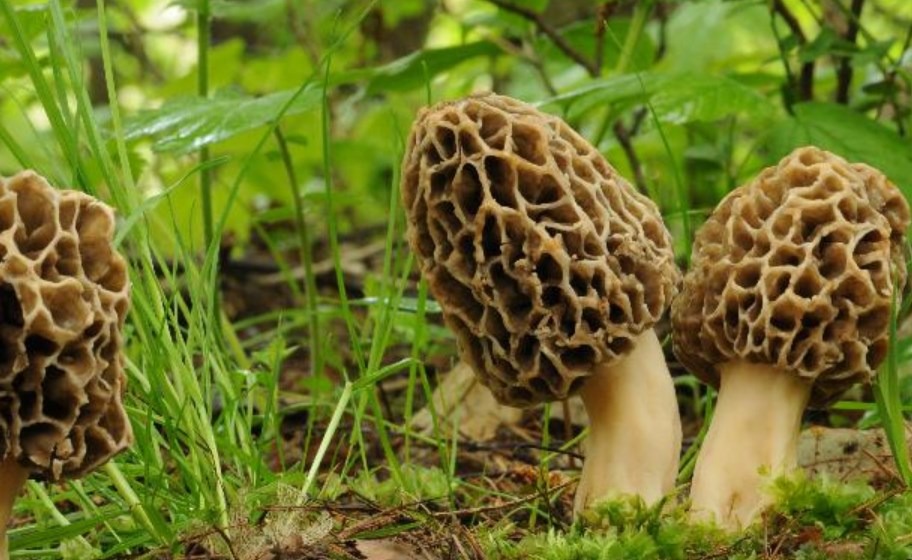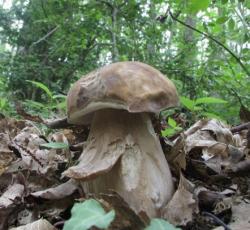The Morchella esculenta is a widespread species both in Italy and in the temperate zones of Europe and the world. It is called the common morel or morel mushroom.
It belongs to the Ascomycota Division, to the Subdivision Pezizomycotina, to the Class Pezizomycetes, to the Order Pezizales, to the Family Morchellaceae, to the Genus Morchella.
From a food and gastronomic point of view, the Morchella esculenta is a good edible, it is the tastiest of its kind, highly sought after, reaches high prices. This family of mushrooms has a characteristic that distinguishes it: it is toxic when raw.
In fact, like all “morchella”, it contains thermolabile micro toxins. In particular, in the morel mushroom, but also in other species of fungi, is present the elvellic acid (acido elvellico), which is known as the main cause of intoxications of a hemolytic nature. This species of fungus, like all the species of the same family, must therefore be consumed only after prolonged cooking.
Indice
Other Names of the Morchella esculenta
The name “esculenta” comes from the Latin “esculentum” and means “delicious”.
As mentioned in the previous paragraph, the Morchella esculenta is also known by the name of Spugnola comune in Italy. It is commonly called common morel, yellow morel or just morel mushroom. In the language of the Val di Fassa in Trentino (Italy), this type of mushroom is commonly called Barigui.
Curiosity: In Nepal this mushroom is called Gochi chyau.
Description of the Morel Mushroom
Let’s now talk about the physical and morphological characteristics of Morchella. The vulgar name well defines its appearance, which actually resembles that of a sponge.

In fact, this fungus is one of the most easily recognisable edible mushrooms due to its characteristic appearance and lively colouring, as well as being one of the most sought after mushrooms by enthusiasts.
Cap
The cat of the morel mushrooms, is called mitraParte superiore del carpoforo in certe specie di funghi.. Specifically, the cat of the Morchella esculenta has dimensions ranging from 2 cm to 5 cm. in diameter. Its average height of the hat can be measured instead from 5 to 10 cm. in height. The consistency of the mitraParte superiore del carpoforo in certe specie di funghi. is rigid.
The shape of the mushroom is rounded conical. They are the numerous depressions that form the characteristic shape. In fact, these are nothing more than alveolar cavities, joined by transversal ribs, which make up the irregular multitude of depressions that make it look like a sponge.
Inside these alveolar cavities, in the axes (the microscopic sacks which cover them), the spores are formed. These spores are smooth, elliptical and ochre-yellow in colour.
The colour of the cap is first cream yellow, then, as it grows, it darkens and becomes ochreous. Other variations of colour are ochre-brown and blackish grey.
Stipe
The stipe of the Morchella esculenta is squat and hollow inside, as is the hat to which it is closely tied. The dimensions vary from 6 to 8 cm. in height and from 3 to 4 in diameter.
The shape of the stipe is cylindrical and usually at the widest base. On average, the stipe is shorter than the mitraParte superiore del carpoforo in certe specie di funghi.. As colouring, the stipe is creamy white, with some small spots towards the base, rust coloured.
Flesh
The flesh of the Morchella esculenta is waxy, fragile and cartilaginous. It is a crunchy type of flesh with a pleasant and delicate taste.
Its smell is slightly spermatic. The internal colour of the flesh is whitish. Both in the stipe and in the cap it is lighter than the external colour. Very important, if the mushroom is dried, after a bath in warm water to regenerate it, it can be used as fresh.
Habitat of Morchella esculenta
The Morchella esculenta usually grows in deciduous forests, in moist soils. However, it can also be commonly found in sandy or earthy-sandy soils. This fungus is spread from the plain to the low hills. The preferred symbiotic tree is the ash tree.
The morel is a symbiotic mushroom. Normally, for developing and growing, it prefers the ash, but also the elm and poplar. It has also been found under some fruit plants and under the spruce. It is a fairly common fungus and since the morels are widespread in all temperate zones in almost all the world.
The spread of the Morchella esculenta, goes from the plain to the low hill.
An ideal habitat for this much sought after species of fungus is the sandy-pebble-stony soil (which does not retain water). The morel mushroom therefore prefers mainly areas of sparse forest with shrubs, along the banks of canals, with land reported and also on burnt land.
Periods of Morchella Esculenta Growth
The period of growth of the morel mushroom is spring. In particular, it runs from March to May, depending on weather conditions and climatic growth zones. It is thought that its spring fructification is favored by the ability of the morel mushroom to grow at low temperatures, compared to other competing mushrooms.
A curiosity about this fungus is that in 1982 an attempt was made to grow it under controlled conditions. Although a beginning of controlled cultivation has been reported, the process has not been successful from a commercial cultivation point of view.
Mushrooms similar to Morchella
The Morchella esculenta can be confused with some species of the genus Gyromitra. We are referring especially to the deadly Gyromitra esculenta. It is an extremely dangerous fungus, deadly if swallowed raw and poisonous even when cooked. In fact, it does not lose its toxicity even after cooking.
An easy element of distinction is the shape of the mitra, which in Gyromitra has a “cerebriform” appearance. It therefore recalls the convolutions of a brain and characterizes its appearance as well as providing an excellent feature of distinction. Moreover, the colour of the miter deviates much to the brownish-red, compared to the yellow of the Morchella Esculenta.
How to cook Morchella Esculenta
The morel mushrooms are excellent and much sought after in the kitchen. If cooked as a side dish of meat and eggs or to dress pasta dishes, they will be a tasty and tasty dish.
They can also be baked in the oven with meat and vegetables or fried in butter. The Morchella esculenta can also be dried, passing a thread in the cat and hanging them in the sun and this process should help to concentrate the flavor of the mushroom.
It is also important to remember that it is necessary, to avoid intoxication, to cook for a long time, because like all morchelle, it contains thermolabile micro toxins (elvellic acid).
IDENTITY CARD
CAT COLOR: Ochreous
STIPE HEIGHT: 5-20 cm
STIPE COLOR:white
FLESH: White
SMELLr: Slightly spermatic
TASTE: pleasant
SPORE: yellowish
HABITAT: Hardwoods
Did you find what you were looking for? See also here:
- Ganoderma Lucidum
- Armillaria Mellea
- Amanita Caesarea
- Agaricus Bisporus
- Amanita Phalloides
- Coriolus Versicolor
- Flammulin Velutipes
- Marasmius Oreades
- Pleurotus Ostreatus
- Agaricus Campestris
- Macrolepiota procera

